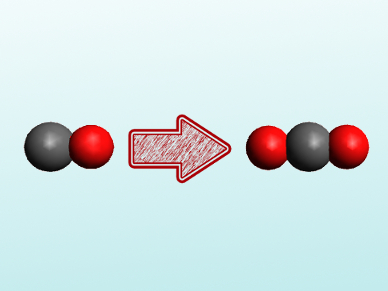Carbon monoxide (CO) is a byproduct in the combustion of fossil fuels. It also is highly toxic. CO is often converted to harmless CO2 by expensive noble metal catalysts at relatively high temperatures (above 150 °C). Metal-oxide-supported gold nanoparticles (Au NPs) can convert CO at lower temperatures, but achieving a high conversion rate at room temperature is challenging.
Yusuke Yamauchi, University of Queensland, Brisbane, Australia, and Kyung Hee University, Yongin-si, South Korea, and colleagues have developed mesoporous iron oxide nanoflakes loaded with Au NPs as a highly effective catalyst for CO oxidation. The team prepared iron glycerate nanoflakes as a precursor by a solvothermal treatment of Fe(NO3)3·9H2O with glycerol in 2-propanol at 180 °C. The resulting nanoflakes were calcined at temperatures between 250 °C and 400 °C to convert them to iron oxide nanoflakes, specifically, to mesoporous maghemite (γ-Fe2O3) nanoflakes. In a final step, the iron oxide nanoflakes were loaded with Au NPs using a deposition-precipitation approach.
The iron oxide nanoflakes have large specific surface areas and can be loaded with up to 15 wt% Au NPs. The finished, gold-loaded catalyst achieves conversion rates of over 95 % in CO oxidation at room temperature. The researchers attribute the nanoflakes’ high catalytic activity to their large surface area, large pore volume, and mesoporous structure, which allows for a good dispersion of the Au NPs on the material.
- Room temperature carbon monoxide oxidation based on two-dimensional gold-loaded mesoporous iron oxide nanoflakes,
Yusuf Valentino Kaneti, Shunsuke Tanaka, Yohei Jikihara, Tsuruo Nakayama, Yoshio Bando, Masatake Haruta, Md. Shahriar A. Hossain, Dmitri Golberg, Yusuke Yamauchi,
Chem. Commun. 2018.
https://doi.org/10.1039/c8cc03639j




